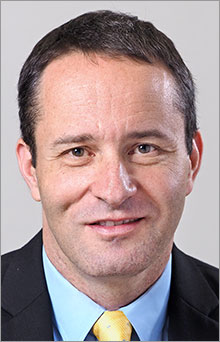News
Guy David Wins HSR’s ‘Article of the Year’ Award
Study Finds Patient-Centered Medical Homes Reduce Emergency Room Visits For Chronically Ill Patients
University of Pennsylvania Wharton School Associate Professor and LDI Senior Fellow Guy David has won the John M. Eisenberg Article-of-the-Year award for his work in the journal Health Services Research.
The award was announced at Sunday’s annual HSR Editorial Board meeting in Boston in conjunction with the AcademyHealth Annual Research Meeting.

The annual HSR honor recognizes “excellence and original research… and its relevance to policy areas that Dr. Eisenberg worked in or promoted during his tenure as Director of the Agency for Healthcare Research and Quality (AHRQ).”
Reducing ED visits
Entitled “Do Patient-Centered Medical Homes Reduce Emergency Department Visits?,” the David article details the study that answers that headline question with a qualified “yes.”
The study team analyzed Independence Blue Cross of Pennsylvania data from 460,000 patients treated in PCMHs throughout Philadelphia and surrounding counties from 2008 to 2011. Its goal was to determine if patients’ connection to a PCMH decreased visits to hospital emergency departments.
The article reported that “Our analysis provides evidence that the adoption of the PCMH model by primary care practices lowers the probability of an ED visit for chronically ill patients.”
Only for certain kinds of patients
At the same time, the researchers found there was no change in the number of ED visits by non-chronically ill patients. They also found that the ED visit reductions were concentrated among patients with diabetes, hypertension and coronary artery disease.
David, PhD, is an Associate Professor of both Health Care Management at the Wharton School and Health Policy and Medical Ethics at the Perelman School of Medicine. He is also the Director of Education at the Leonard Davis Institute of Health Economics (LDI) and Director of the Doctoral Program in Health Care Management and Economics at Wharton.
Study co-authors are Philip Saynisch, a Harvard Health Policy Management PhD student; Candace Gunnarsson of Health Economics and Outcomes Research, CTI Clinical Trial and Consulting; and Ravi Chawla and Somesh Nigam of the Independence Blue Cross Department of Informatics.
A PCMH is organized around a central electronic records system and a clinical team — including physicians, advance-practice nurses, physician assistants, pharmacists, social workers and other professionals — to coordinate care of the “whole patient”.
History of the concept
The basic PCMH concept dates to the 1960s when the American Academy of Pediatrics established the idea of a coordinated care “medical home” for children with complicated health problems. The idea subsequently gained traction as a potential way to address primary care accessibility issues and the consequences of a fee-for-service system primarily focused on siloed treatments. During the last decade, large numbers of government-funded public health clinics as well as private medical practices have converted to versions of the PCMH model. That trend was greatly accelerated by the Affordable Care Act’s adoption and funding of the PCMH as one of its most important innovative delivery strategies.
But the exact organizational structure, protocols, reimbursement models and evaluation methods for PCHMs remain fluid and varied across the thousands of organizations currently involved in the daily task of defining what works best in this team-care “whole patient” environment.
This study is the latest to contribute new insights and knowledge to this quest.